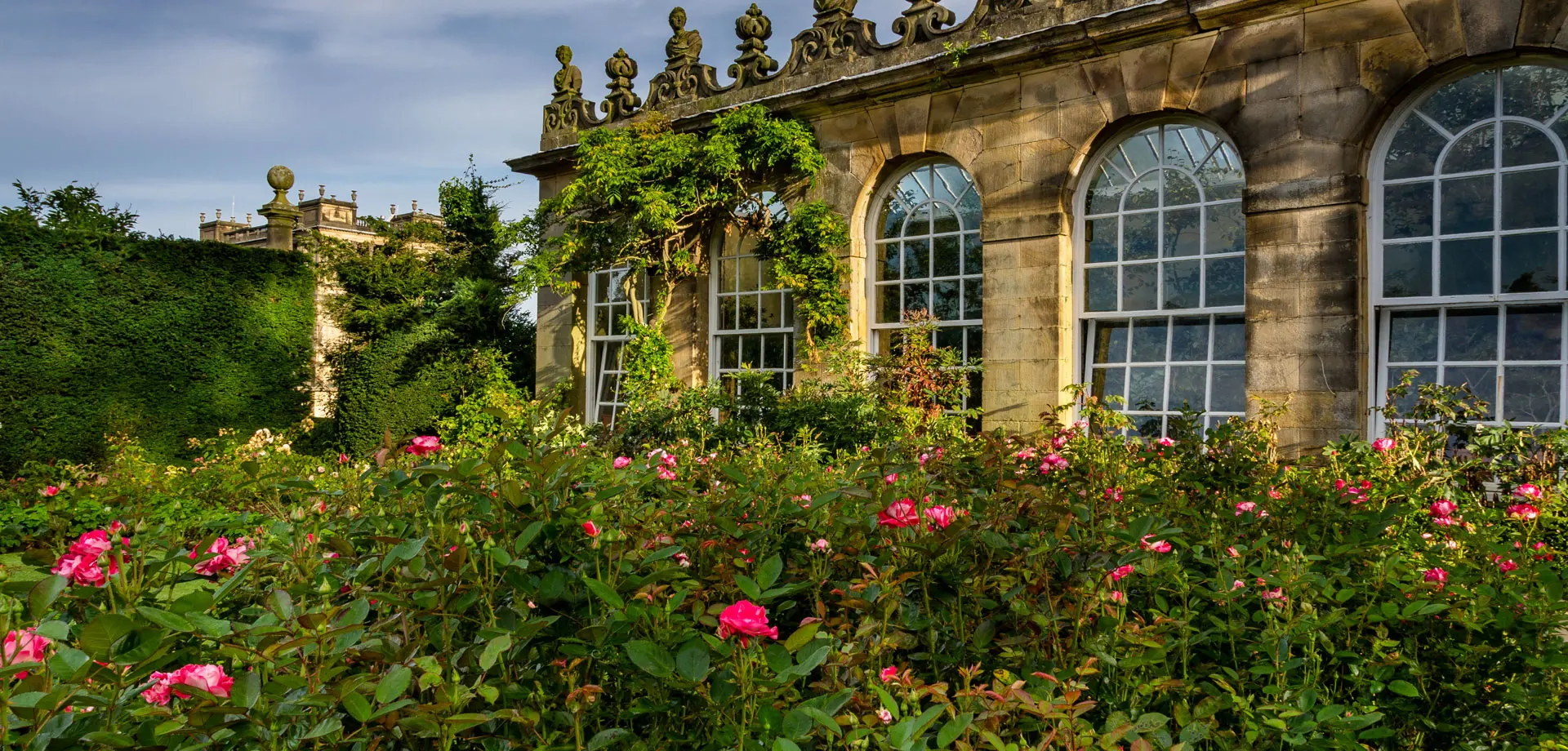After his accession in 1811, the 6th Duke laid out a new parterre immediately to the south of the 1st Duke’s Greenhouse. This was ornamented with the statue of Flora, statues from the temple at Carnac, and a ‘white cistern…from Carrar’. So it was that the essential layout of the garden was created, and it was named the French Garden.
In 1939, Duchess Mary, wife of the 10th Duke, remodelled this area and it became known as the Rose Garden. She enclosed it with a yew hedge and planted hybrid tea roses. Nearly all the statuary and ornaments have been moved. The central stone bed is now a fountain in the inner court of the house and the stone pillars which line the central path of the Rose Garden came from the inner court of the house.
We still grow some of the rose varieties Duchess Mary planted in 1939, although we have had to replace the plants and soil several times over the years. These varieties include Buff Beauty, Felicia, and Savoy Hotel. Various edging plants have been used, including lavender, but we now edge the sixteen rose beds with alpine strawberries, which are renewed every 2 years. View a current planting plan of the Rose Garden (PDF, 115Kb).
The four central flower beds are planted with White Phlox, which flowers later than the roses, therefore extending the season of interest.
The flower beds in front of the First Duke’s Greenhouse are home to a collection of tree peonies, which flower from April to mid-June, and were introduced by Duchess Deborah. In 2011, a small group of our garden volunteers painstakingly lifted and re-laid all the stone edging in the Rose Garden as it had become so uneven. It is now straight and level, and a testament to their hard work.



